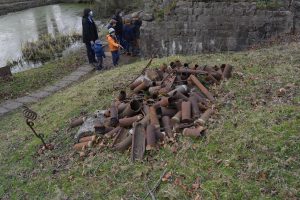Section 1 – What is toxic heritage?

The activities and questions in this section invite exploration of what it means to think about environmental harm as heritage. The working definition of toxic heritage for the edited volume
includes both the history of the processes and substances that create or threaten physical harm to environments and the life supported within them and the intersections of that history of harm with both formal heritage institutions and informal memory practices. These activities are opportunities to interrogate the different ways that heritage can deploy the past, such as valorization, remembrance, forgetting, as a spur to action, and as a mechanism for forgiveness, as well as examine how we experience toxicity – as waste, bioaccumulation, post-mining landscapes, nuclear imaginary, and poisoned places.

